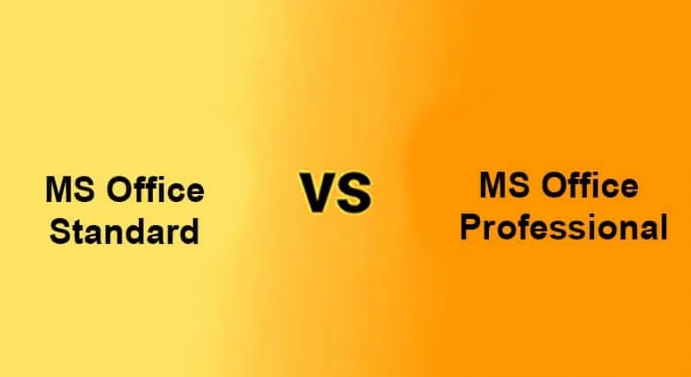What’s the Difference Between Office Standard and Professional?
Microsoft Office Standard and Microsoft Office professional are two editions of Microsoft created to provide a seamless experience to users working on projects, reports, emails, documents, and presentations. There are common applications we interact with daily, be it at work, office, or school.
There is usually a lot of confusion when it comes to differentiating between Office Standard and Office Professional editions. In this guide, we explain the key differences;
Microsoft Office Standard
Microsoft Office Standard contains all the essentials for a business that needs desktop Office applications for PC.
This edition contains the classic versions of Office apps that are installed on one PC or Mac.
The office applications that come with this edition include;
- Outlook
- Word
- Excel
- PowerPoint
- Publisher (PC only)
You can have access to additional OneNote features- but the features vary. You will also have access to Word, OneNote, PowerPoint, and Excel web versions.
If you are an administrator, you will easily control computers and user accounts with a group policy. Administrators can also deploy software to many users at once with volume activation.
You can take control of a remote computer or even a virtual machine over a network connection using terminal services. With app telemetry, which is an automated remote measurement and data collection, you can make decisions which can help you in your analytics.
You will also be able to safeguard digital information from unauthorized use when you integrate with Windows Rights Management Services for Windows Server.
Microsoft Office Professional
This edition of Office has all the essentials for a business that needs desktop Office applications for PC. Additionally, it has features, functionalities, and applications to facilitate instant messaging and HD video conferencing.
Office applications that are included in the suite include;
- Outlook
- Word
- Excel
- PowerPoint
- Publisher (PC only)
- Access (PC only)
- Skype for Business.
You will also have access to additional OneNote features. You will also have access to Word, Excel, OneNote, and PowerPoint web versions.
This edition of Office gives you the power to be more productive by communicating and collaborating easily with your colleagues or family in different locations using Skype for Business.
If you are an administrator, you can control computers and user accounts using a group policy centrally. Additionally, you can deploy software to many users at once using volume activation.
You can take control of a remote computer or a virtual machine that is on a network using terminal services. With app telemetry, you can make vital decisions on data that can help you in your analysis.
You can archive emails right from Outlook. You can also set retention policies to automatically archive or delete emails. There are Outlook Policy Tips and Exchange Data Loss Prevention to help you prevent the loss of sensitive data.
With Excel, you will be able to scan spreadsheets for errors and inconsistencies as well as view audit trails using Spreadsheet Compare.
This edition of Office also allows users to streamline the integration and manipulation of large volumes of data from various sources. You can perform rapid analysis using Power Pivot native in Excel. You can also explore different cuts and views of data with a click. Additionally, using an interactive Power View, you should be able to compile data charts and graphs into a single view.
Lync client and Skype for Business allow you to place voice calls. You can initiate a call from a contact list by typing a name or number or using a dial pad to initiate PSTN calls.
When you integrate with Windows Rights Management Service, you will be able to safeguard your digital information from unauthorized use. Site mailboxes will allow you to increase collaboration and improve team productivity.
You can check our comprehensive guide on Office 2013 vs Office 2016 here.

